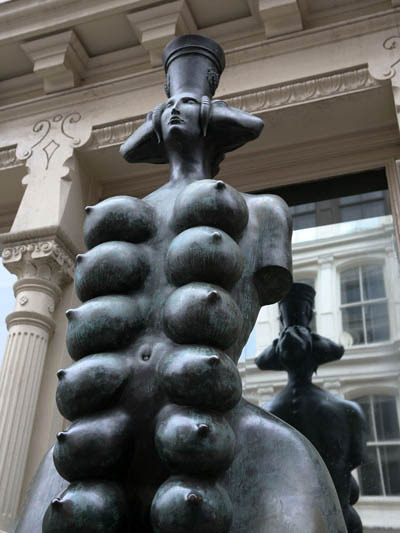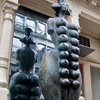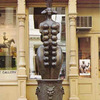Cybele, Phrygian Goddess of Fertility
Cybele, Mihail Chemiakin (1943- ), Sculpture in SoHo, New York City
In Ancient Phrygia, located in what is now known as Turkey, Cybele arose as the Earth Mother goddess. Spreading across various cultures of the Aegean, her cult ultimately flourished in Ancient Greece of the 5th century BCE. Meaning “Mother of the Mountain” (Kubileya) in Phrygian, her origins are attached to the earth and the natural world. As a personification of fertility, she also came to represent the Mother of the Gods in both Greek and Roman cultures.
Created by Russian artist, Mihail Chemiakin, this impressive bronze sculpture stands 15 feet tall and includes eight pairs of breasts, four pairs of buttocks, three animal heads and a human face (newyorkdailyphoto). In New York, the sculpture is visible from the street to the casual passerby. As the pregnant woman watches her own body grow, the Cybele image reminds her of the powers innate to her own fertile form. Looking at the immense sculpture and the magnificence of its many female attributes, she visualizes how her own body acts a potent place through which new life will come to be born, fed and raised.
Born in Moscow in 1943, Mihail Chemiakin is a Soviet Nonconformist artist.


